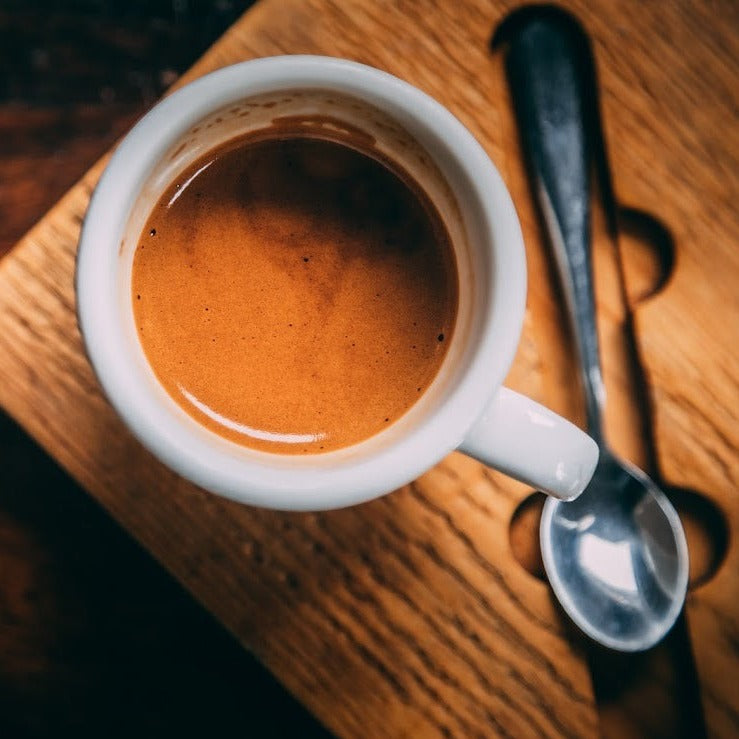Brewing Tips to Get the Best Out of SOE Single Origin Espresso
Brewing Tips to Get the Best Out of SOE Single Origin Espresso
Blog Article
Coffee Beans 101: Everything You Required to Learn About Coffee and Blended Coffee Beans
When it involves coffee, recognizing the subtleties of coffee and mixed beans can change your day-to-day mug. You'll discover the unique features of Arabica and Robusta beans, and just how each influences taste and high levels of caffeine material. From the growing procedure to toasting strategies, every action plays a function in your coffee experience. So, what makes the ideal mixture? Let's check out the crucial aspects that contribute to a phenomenal mug of coffee.
Recognizing Coffee Beans: Types and Selections
When diving into the world of coffee, comprehending the kinds and varieties of coffee beans is necessary for every lover. Arabica beans are recognized for their smooth, intricate flavors and reduced caffeine content, making them a preferred among coffee fanatics.
Within these varieties, you'll locate different local ranges, each bringing one-of-a-kind attributes. Ethiopian Yirgacheffe uses bright flower notes, while Colombian beans offer a well-balanced taste profile. As you explore, keep in mind to take notice of handling methods like cleaned or natural, as they can considerably influence the final taste. By familiarizing on your own with these beans and their flavors, you'll elevate your coffee experience and make even more educated selections in your brewing journey.
The Expanding Process: From Seed to Bean
When you explore the trip of coffee, all of it begins with seed option strategies that establish the structure for high quality. From there, cultivation and collecting play important functions in making certain the beans prosper. Handling approaches change those collected cherries into the coffee beans you enjoy.
Seed Selection Methods
Choosing the appropriate seeds is essential for generating high-quality coffee beans, as it lays the structure for the entire expanding process. You ought to start by picking seeds from trusted resources that prioritize top quality and genetic variety. Try to find selections known to prosper in your specific environment and soil problems. Focus on the seed's age and storage space conditions, as fresh seeds have a tendency to germinate better. When possible, choose natural seeds to decrease exposure to unsafe chemicals. Consider the disease resistance of different ranges, as this can significantly affect your yield. Ultimately, do not wait to talk to neighborhood farmers or specialists to gain understandings into the best seed choices for your area. This knowledge will certainly enhance your coffee-growing experience.
Cultivation and Harvesting
As you support your coffee seeds into growing plants, recognizing the growing and harvesting process is crucial for accomplishing the very best flavor and high quality. Beginning by growing your seeds in well-draining dirt, ideally in a shaded area to shield them from direct sunlight. As your plants expand, keep constant moisture, and be mindful of their need for nutrients. Prune frequently to advertise air flow and healthy development.
When it comes time to harvest, try to find ripe cherries, which commonly turn a dynamic red. Hand-picking is commonly the ideal approach to ensure only the ripest cherries are picked. Timing is necessary; harvesting also early or far too late can influence the flavor account of your beans. Accept patience and treatment, as this is where quality starts.

Processing Methods Explained
As soon as you've collected your coffee cherries, the following important action is processing them to transform those lively fruits into the beans you'll brew. There are 2 major approaches: the damp process and the dry procedure. In the dry process, you spread the cherries out in the sunlight to completely dry, permitting the fruit to ferment and impart one-of-a-kind tastes to the beans. On the other hand, the damp process entails removing the fruit right away and fermenting the beans in water, leading to a cleaner preference. After processing, the beans are hulled, arranged, and typically dried once more. Each approach influences the flavor profile, so try out both can assist you discover your preferred brew. Recognizing these approaches is key to appreciating your coffee experience.
Toasting Methods: Just How Taste Is Established
When it involves roasting coffee beans, recognizing roast degrees is key to exposing their distinct flavors. Each toasting technique effects the aroma and improves the taste advancement procedure, offering you a richer coffee experience. Let's explore just how these aspects integrated to boost your everyday brew.
Roast Degrees Explained
Roast levels play an essential role in shaping the taste account of your coffee. By recognizing these levels, you can much better choose a coffee that matches your taste choices. Experiment with different roasts to discover which one reverberates with you, boosting your general coffee experience and satisfaction.
Influence On Aroma
The roast level not only affects the taste of your coffee but likewise substantially impacts its aroma. Each roasting strategy launches different unpredictable substances, shaping just how your coffee smells. In addition, the quality of the beans plays a critical role; freshly roasted coffee releases a lot more aromatic oils, boosting that luring aroma.
Flavor Advancement Refine
As you explore the taste growth process, you'll find that roasting methods play an important role in shaping the preference account of your coffee. The roasting temperature and time straight affect the level of acidity, sweet taste, and anger of the beans. Light roasts retain more of the bean's original flavors, highlighting fruity and flower notes. Tool roasts equilibrium acidity and body, offering an all-round flavor. Dark roasts, on the various other hand, draw out bold, great smoky attributes while diminishing the bean's integral high qualities. During roasting, chemical responses, like the Maillard reaction and caramelization, transform the beans and improve their intricacy. Try out various roasting degrees can assist you find your ideal brew, so don't wait to taste and find the rich range of tastes!
Coffee vs. Blended Coffee: Secret Differences
Espresso and blended coffee each offer unique experiences that accommodate different tastes and preferences. Coffee is a concentrated coffee brewed by requiring warm water through finely-ground coffee beans, causing an abundant, vibrant taste and a creamy layer of crema ahead. It's typically appreciated as a shot or used as a base for drinks like coffees and lattes.
On the other hand, blended coffee incorporates numerous beans from different areas, creating an extra balanced taste account. You'll often locate blends that highlight body, level of article acidity, or sweetness, making them versatile for various brewing techniques. While espresso concentrates on strength, blended coffee might offer a broader variety of flavors that can transform with each sip.
Ultimately, your selection in between coffee and combined coffee boils down to your personal preference. Whether you long for a quick jolt or a leisurely cup, both alternatives have something scrumptious to supply.

Brewing Techniques: Opening the Perfect Cup
When it concerns developing coffee, discovering the right technique can change your experience and raise your cup. Each developing technique has its one-of-a-kind appeal and can significantly affect your coffee's flavor and scent. Utilizing a French press permits you to take pleasure in a rich and full-bodied brew, while a pour-over method supplies a clean, brilliant mug with unique flavors.
If you favor coffee, buying a high quality machine can help you grasp the art of drawing shots. For convenience, a single-serve hull system uses rate without sacrificing taste.
Don't neglect about cool brew, which provides a smooth, less acidic coffee perfect for warm days. Experiment with various methods to discover what reverberates with your taste.
Tasting Notes: Recognizing Taste Profiles
How can you absolutely value your coffee if you do not know what tastes to look for? Sampling notes are your guide to understanding the complicated globe of coffee. When you drink, take note of the initial tastes that hit your taste buds. You might identify fruity notes, like berry or citrus, or perhaps a nutty touch. As you remain to taste, observe how the tastes develop-- this is referred to as the "coating." Some coffees might leave a chocolatey or sugar aftertaste, while others may have a brilliant, tidy surface.
Consider the body of the coffee, too; is it ventilated and light or thick and syrupy? Do not fail to remember acidity; an intense level of acidity can include liveliness, while a low acidity may give a smoother experience. By identifying these taste accounts, you'll deepen your connection with each cup, making coffee sampling a wonderful journey of discovery.

Tips for Picking and Storing Coffee Beans
Saving and picking coffee beans properly can considerably boost your brewing experience. Beginning by choosing top quality beans that match your taste - SOE.
When you have your beans, save them in a closed container to prevent direct exposure to moisture, air, and light. A dark, awesome place works best, so avoid maintaining them in the refrigerator additional resources or fridge freezer, as this can present wetness. Just grind the amount you need to maintain quality; whole beans maintain taste longer than pre-ground coffee.
Last but not least, attempt to use your beans within 2 to four weeks after opening up for peak preference. Adhering to these tips will ensure your coffee stays enjoyable and tasty, elevating your everyday mixture to brand-new elevations.
Often Asked Inquiries
For How Long Do Coffee Beans Stay Fresh After Toasting?
Coffee beans stay fresh for regarding 2 weeks after toasting - SOE. You must save them in an impermeable container, far from light and dampness. Afterwards, their flavor and aroma begin to lessen considerably

Can I Mix Different Coffee Bean Varieties?
Definitely, you can blend various coffee bean ranges! Explore blends can boost flavors and produce a distinct preference account. Simply make sure to balance the toughness and features of each variety for the ideal outcomes.
What Is the Suitable Grind Dimension for Coffee?
For coffee, you'll desire a great work size, about the texture of salt. This permits perfect extraction, resulting in an abundant, savory shot. Experiment a little bit to locate what fits your taste best!
Just How Does Elevation Affect Coffee Bean Flavor?
Altitude impacts coffee bean taste by influencing the development rate and chemical make-up. Higher altitudes bring about slower growth, which enhances level of acidity and intricacy, providing your coffee a unique and lively preference you will not fail to remember.
Are There Decaffeinated Variations of Espresso Beans?
Yes, there are decaffeinated variations of espresso beans. You can take pleasure in an abundant espresso flavor without the caffeine kick. Simply look for "decaf" blends at your regional cafe or specialty shop.
Coffee Beans 101: Whatever You Need to Know Regarding Coffee and navigate to these guys Blended Coffee Beans.
When diving right into the world of coffee, understanding the kinds and selections of coffee beans is important for every enthusiast.When it comes to toasting coffee beans, recognizing roast degrees is key to revealing their special flavors. Espresso is a focused coffee made by compeling hot water via finely-ground coffee beans, resulting in a rich, vibrant flavor and a creamy layer of crema on top.On the other hand, mixed coffee integrates various beans from various regions, creating a much more well balanced taste account.
Report this page